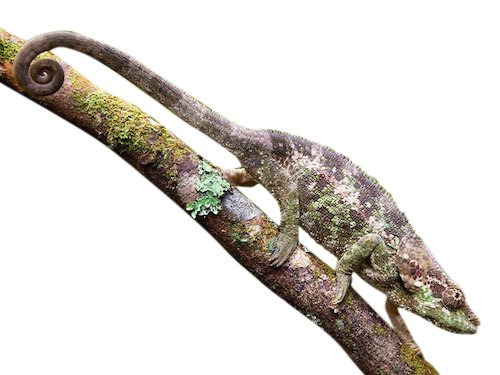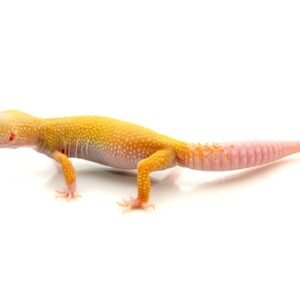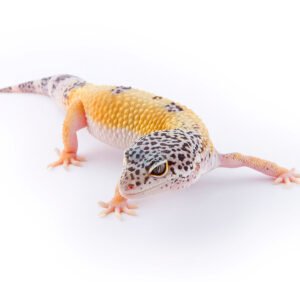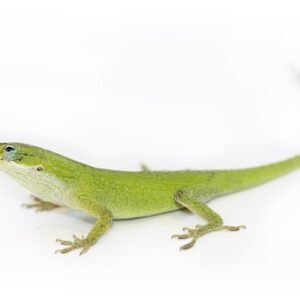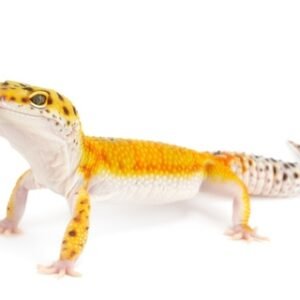Understanding the Elephant-Eared Chameleon
The elephant-eared chameleon, scientifically known as Bradypodion ventrale, is a distinctive species characterized by its unique physical features and intriguing behaviors. As its name suggests, this chameleon possesses large, ear-like flaps of skin adjacent to its head, which not only enhance its visual appeal but also aid in regulating its body temperature. These flaps, combined with its remarkable ability to change colors, serve crucial purposes in communication, camouflage, and thermoregulation. The color-changing capacity can vary from vibrant greens to shades of brown, adapting not only to environmental conditions but also to the creature’s emotional states.
In nature, the elephant-eared chameleon typically inhabits subtropical or tropical forests, demonstrating a preference for humid environments rich in vegetation. These regions provide the necessary cover and accessibility to their primary food sources, which predominantly consist of insects. Adult chameleons may also consume small invertebrates, making their dietary habits relatively diverse. Prospective pet owners should be prepared to replicate this varied diet by providing a mix of crickets, mealworms, and other insects to ensure the health and vitality of their chameleon.
Owning an elephant-eared chameleon requires a deep understanding of its natural habitat. These reptiles thrive in conditions that mimic their wild environments, necessitating adequate humidity levels and arboreal structures for climbing. Potential owners must also be mindful of the specific temperature gradients necessary to support the chameleon’s physiological needs, as improper conditions can lead to stress and health complications. Additionally, keeping these creatures demands commitment, as they are sensitive to changes in their surroundings. Thus, it is essential for anyone considering this captivating reptile as a pet to be fully aware of the challenges and requirements associated with its care, ensuring a stable and nurturing home for their new companion.
Creating the Ideal Habitat for Your Chameleon
Establishing an appropriate habitat for your elephant-eared chameleon is essential for their health and well-being. The first consideration is the enclosure size; for an adult chameleon, a minimum of 24 inches wide by 48 inches tall is recommended. This vertical space allows the chameleon to climb and bask, emulating their natural environment. The enclosure should also be well-ventilated to maintain airflow, which is critical for their respiratory health.
Temperature regulation within the habitat is vital. The basking area should be heated to approximately 80-85°F, while the cooler areas should remain between 70-75°F. Use a reliable thermometer to monitor these temperatures consistently. Additionally, it is important to observe the humidity levels, which should ideally be around 40-60%. Mist the enclosure daily to maintain moisture levels, and consider installing a hygrometer for accurate readings. This will help replicate the humidity conditions that chameleons would encounter in their natural habitats.
Lighting plays a crucial role in the well-being of your chameleon. Providing UVB lighting is necessary to facilitate calcium absorption and prevent metabolic bone disease. A UVB bulb should be installed within the enclosure and replaced every six months because its efficacy diminishes over time. The placement of this lighting should allow the chameleon to bask while having access to shaded areas, enabling it to regulate its exposure.
Substrate options can also enhance the habitat. Fresh newspaper, paper towels, or eco-friendly reptile carpet are all viable choices that simplify cleaning. Live plants are encouraged not only for aesthetic appeal but also as climbing and hiding spots, which help reduce stress. Popular choices include pothos and schefflera, both of which thrive in a humidity-rich environment. Consistent maintenance of the habitat, including regular cleaning and monitoring of temperature and humidity, will contribute to the overall health and happiness of your elephant-eared chameleon.

